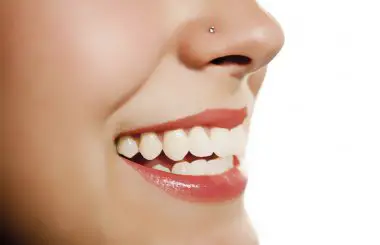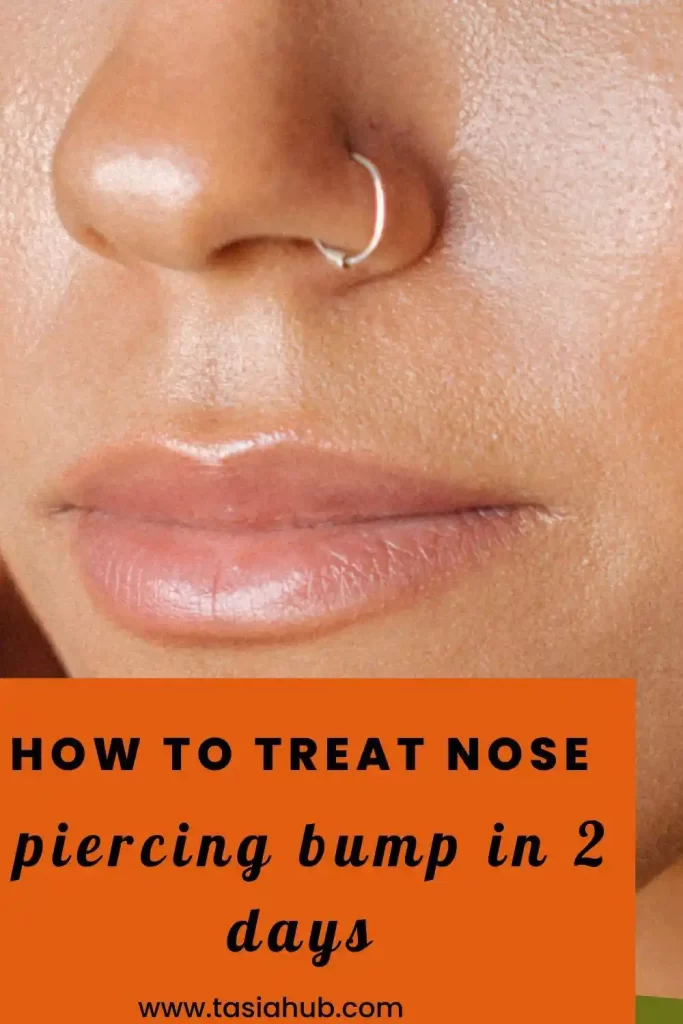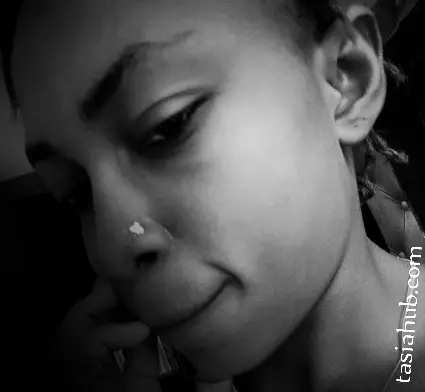How Long Does It Take For A Nose Piercing To Heal Completely?

Nose piercings have become increasingly popular in recent years, and it’s easy to see why. They’re a great way to express personal style and add a touch of individuality to any look. But when it comes to the healing process, it’s understandable to be curious about exactly how long it will take before you can fully enjoy your new piercing. In this blog post, we’ll cover the ins and outs of the nose piercing healing process and what you can expect.
This post contains affiliate links and I may earn a small commission when you click on the link at no additional cost to you. As an Amazon Affiliate, I earn from qualifying purchases, thank you.
First, let’s start with the basics. Generally speaking, a nose piercing will take anywhere from 4 to 6 months to fully heal, sometimes, even longer, mine took about 8 months to completely heal. Of course, this timeline can vary depending on a variety of factors. Things like aftercare, lifestyle habits, and the type of jewelry you choose to wear can all impact the healing process.
During the first few days after getting your nose pierced, it’s common to experience some swelling and tenderness around the piercing site. You may also notice some redness or irritation. These symptoms are completely normal and typically subside within a few days. To help alleviate these symptoms, you can apply a cold compress to the area and take over-the-counter pain relievers like ibuprofen as needed.
As the healing process continues, you’ll need to be diligent about your aftercare regimen. This typically involves cleaning the piercing site with a saline solution 2 to 3 times per day and avoiding certain activities that can irritate the piercing. These might include swimming, touching the piercing with dirty or unwashed hands, or using harsh facial cleansers.
It’s also important to choose the right type of jewelry to wear during the healing process. In general, you’ll want to opt for jewelry that is made from hypoallergenic materials like surgical steel or titanium. You should also avoid changing the jewelry too often, as this can disrupt the healing process.
Nose Piercing Healing Process
- The Acceptance Stage: during the first few weeks, your body recognizes and starts closing up the wound around the pierced area, it replaces the pierced tissue with a new tissue.
During this process, your blood clots harden around the jewelry and you start noticing swelling (nose piercing bump) on the pierced area, the swelling happens because your body is trying to reject the piercing and jewelry. You may also experience bleeding, pain, and warmth.
2. The Healing Stage: this happens in the first few months after the swelling and bleeding stops, you will start noticing a yellow-like substance on the area, be rest assured that this is normal, it’s all part of the healing process.
3. The Maturation Stage: this is the final stage of healing, by this stage, you will be able to fully remove the jewelry without bleeding and without the area closing itself for a few days or weeks.
This stage takes a lot of time to complete, mine took up to 12 months and still counting, yours might be less or more, so just be patient.
How To Tell If Nose Piercing Is Healed
So, how will you know when your nose piercing is fully healed? Generally speaking, you can expect the piercing site to close up completely and the surrounding tissue to look and feel normal. You may also notice that the piercing has stopped producing discharge and is no longer tender to the touch.
Pin This Image!

How To Get Rid Of Nose Piercing Bump
In this section, I’ll share my experiences, discuss how I got rid of a nose bump within two days, and reveal the steps I took to expedite the healing process for the piercing.
A few months back, I opted for a nose piercing, and things took an unexpected turn. Dealing with persistent bleeding, wrestling with the nose ring, and ultimately developing a nose bump made the experience quite challenging.
What I Experienced After Piercing My Nose
After allowing the initial pierced area on my nose to heal and close, I decided to pierce the same spot a second time. The first piercing encounter presented challenges, as the process did not go smoothly. Despite the piercer being a professional, he faced difficulties during the session, resulting in bleeding.
Two days later, small bumps began to appear around the pierced area. Seeking advice from the piercer, he suggested puncturing the bumps, initiating a troublesome cycle. Regular puncturing led to recurring nosebleeds and pus discharge. Assuming an allergy to the jewelry, I attempted changing it regularly without improvement.
Frustrated by the lack of progress, I eventually decided to let my nose heal naturally, as none of my efforts seemed effective. Upon piercing, the only issue I encountered was the reappearance of a nose bump. Realizing that further puncturing wouldn’t help, I sought a solution to remove the bump without direct contact.
How To Treat Nose Piercing Bump At Home in Two Days
Please do not rupture your nose-piercing bump as it will only worsen the situation, try this simple at-home remedy and say a forever goodbye to your nose-piercing bump.
- take two tablets of aspirin and crush it into a smooth powder
- add a drop or two drops of water and mix with the powder to form a paste
- apply the paste on the bump and leave for 30 minutes, you may feel a little sting while it’s on your nose, this is normal
- wash off after 30 minutes and dry your nose, repeat this process two times a day.
And that’s it, very simple, you should start seeing the bump disappearing the next day or two, below is a photo of when I did mine, I’m sorry it’s not clear but you should be able to see the aspirin on my nose.
Feel free to repeat this treatment every single time you notice a bump, it’s safe to do.

Best Nose Piercing Aftercare Solutions
Selecting the best saline solution for nose piercing is crucial to promote proper healing and minimize the risk of infections. Saline solutions designed for nose piercings should be isotonic, meaning they have a similar salt concentration to the body’s natural fluids. Here are some considerations when choosing the best nose piercing saline solutions:
- Sterility: Opt for sterile saline solutions without additives or preservatives. Sterility ensures a clean environment for the piercing, reducing the likelihood of contamination.
- Isotonic Formulation: Look for solutions with an isotonic formula, as they match the body’s natural saline levels. This promotes a gentle and effective cleansing process without causing irritation.
- No Additives or Preservatives: Avoid solutions with additional ingredients, fragrances, or preservatives, as they may cause irritation or allergic reactions. A simple saline solution is typically sufficient for cleansing.
- Ease of Application: Consider saline solutions that come in convenient spray or mist form for easy application. This allows for precise and controlled cleansing without excess pressure on the healing piercing.
- Packaging: Opt for solutions that come in sterile, sealed packaging to ensure the product’s integrity. Single-use ampoules or spray bottles help maintain hygiene throughout the healing process.
- Recommended by Professionals: Consult with your piercer or healthcare professional for recommendations on specific saline solutions. They may provide insights based on their expertise and experience.
Popular options for nose piercing saline solutions include sterile wound wash saline solutions available at pharmacies or those specifically marketed for piercing aftercare. Always follow the recommended usage instructions and consult with a professional if you experience any issues during the healing process.
BodyJ4You Piercing Aftercare Spray
Introducing an effective natural piercing aftercare solution enriched with Saline Solution, Sea Salt, and Essential Minerals. This innovative spray is designed to facilitate a shorter recovery time by ensuring cleanliness and protection for various body piercings, including gauges, ear cartilage, eyebrows, nose, septum, navel, belly button, and more.
This versatile product is essential for daily use in caring for ears, face, and body piercings. Its regular application aids in reducing pain, soothing irritated skin, and minimizing swelling and wounds associated with both new and old piercings.




